Celebrating the History of Nursing in the Military Health System

[ad_1]
If you didn’t know it before the COVID-19 pandemic, you know it now: Nurses are the unsung heroes of healing. From delivery rooms to disaster zones, medical facilities would simply not function without them. The lifeblood of every health care setting.
The history of nursing in the U.S. military dates as far back as the Revolutionary War. Military nurses often worked for little to no pay, under dangerously deplorable conditions, without rank or recognition. And nurses did more than save lives; they paved the way for future generations of nurse professionals by changing the course of American medical history.
In 1993, the American Nursing Association’s Board of Directors designated May 6–12 as permanent dates to observe National Nurses Week. This year’s National Nurses Week theme is “Make A Difference—Anytime, Anywhere, Always.” Let’s explore some of the events, milestones, and people who made all the difference in our nation’s medical history and today.
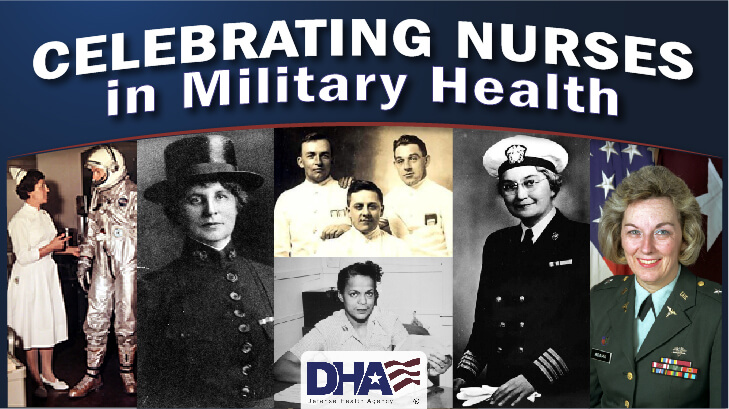
A timeline of the legacy of nursing and nurses in the US Military and those they inspired who continue make a difference—anytime, anywhere, always.
1775 The Military’s First Organized Nurse System
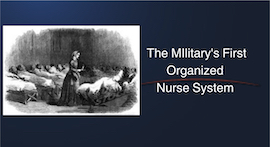
During the American Revolution, many wives, daughters, and mothers of the troops followed them into encampments to clean, cook, and nurse illnesses and injuries. First considered a distraction, their military value soon became undeniable; if a woman was doing the caretaking, one more man was available to fight. On July 27, 1775, Congress approved a request from Gen. George Washington to supply one female nurse for every 10 patients, and each was paid of $2 per month. A supervisory matron was allotted to every 100 patients. This was the first organized system for nurses in the American military. Although most had no medical training and none were included in the military chain of command, these nurses blazed the trail for viable military medical professions traditionally performed only by men.
Nurses in the War of 1812
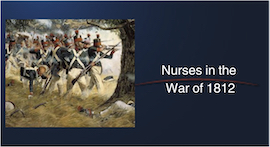
Just as they had in the American Revolution, soldiers’ wives and townswomen near battlefields followed troops during the War of 1812. Many were hired by military hospitals to serve as nurses. But, not all the remaining women were allowed to remain at the battlefield camps. It was decided six wives would be allotted for every 100 soldiers per encampment, and they’d be selected by a lottery system. The chosen women were employed as nurses, seamstresses, and maids. If a nurse’s husband died, she was granted 3-6 months to grieve, and then she had to find a new husband or leave the camp.
1861 Dorothea Dix

To say Dorothea Dix transformed the field of nursing and medicine would be an understatement. After Congress authorized female nurses for service in Army hospitals, Dix was appointed as Superintendent of Women Nurses for the Union Army. She was initially criticized for the stringent standards she set for the profession of miliary nurses, but her fierce leadership became integral to advancing the role of nurses in the war and in the overall medical field. Over four years, Dix managed thousands of nurses who served the federal forces. After the war, Dix’s work wasn’t done. She relentlessly advocated for formal training and additional opportunities for women in nursing. And Dix’s visionary push for better care for the mentally ill resulted in the restructuring of hospitals both in the United States and abroad.
1861 Clara Barton “The Angel of the Battlefield”
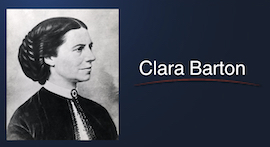
Clara Barton’s contributions toward the advancement of nursing and public heath are prolific. During the Civil War, Barton quit her job as recording clerk at the U.S. Patent Office made it her mission to deliver supplies provide nursing care to Union soldiers in need. Despite having no formal medical training, Barton often assisted surgeons and tended to recovering wounded. This unwavering dedication earned her the nickname “Angel of the Battlefield.” When the war ended, Barton found new ways to help the military and those in need. With permission from President Lincoln, she opened the Office of Missing Soldiers, helping to reconnect more than 20,000 soldiers with their families. She also founded the American Red Cross in 1881 and led it for the next 23 years.
1862 Hospital Ship Red Rover
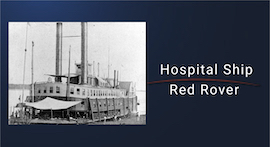
The need for nursing help during the Civil War led the Navy to bring volunteer nurses aboard its first hospital ship Red Rover in 1862. Throughout the Civil War, Red Rover operated along the Mississippi River, ferrying military patients (both Union and Confederate) to shore hospitals.
1862 Walt Whitman

Yes, that Walt Whitman, who penned Leaves of Grass and O Captain! My Captain! was a military nurse during the Civil War. In 1862, Whitman visited the battle zone at Fredericksburg, Virginia, where his brother was recovering from wounds. Moved by the suffering he saw there, Whitman remained as a volunteer nurse for the duration of the war. He cared for both Union and Confederate soldiers in makeshift hospitals in and around Washington, D.C., treating and comforting the soldiers with the compassion of, well, a poet. The Wound Dresser, one of Whitman’s “Drum Taps” poems, describes his service as a nurse during the Civil War.
1872 First Formal Nurse Training School
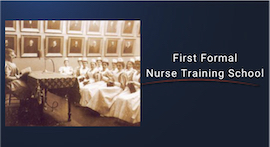
Among the many takeaways from the Civil War was that America’s nurses should be afforded better training. Despite working under deplorable conditions with meager supplies, Civil War nurses proved themselves intelligent, dedicated, and capable of more. In 1862, the New England Hospital for Women and Children became the first American school to offer a formal nurse training program. A one-year curriculum with 12 hours of required lectures was offered. Students were taught to take vital signs and apply bandages. The New England Hospital for Women and Children graduated the first trained nurse, Linda Richards, in 1873, and the first African American trained nurse, Mary Eliza Mahoney, in 1879.
1898 Nurses in the Spanish-American War
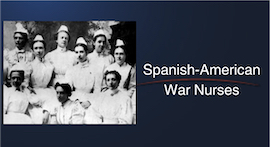
At the start of the Spanish-American War in 1898, the Surgeon General requested and promptly received congressional authority to appoint women nurses under contract at the rate of $30 per month and a daily ration. More than 1,500 women signed up and were stationed in Cuba and the Philippines. They not only treated combat injuries, but also battled against debilitating tropical diseases—yellow fever, malaria, dengue fever—that afflicted U.S. service members and jeopardized the war effort.
1898 Anita Newcomb McGee
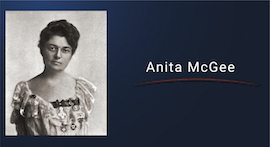
Dr. Anita Newcomb McGee, the only female acting assistant surgeon in the Army, was placed in charge of selecting graduate nurses. These nurses became known as “contract nurses” of the Army, and military nursing rose to a new level of professionalism. At the end of the war, she drafted the legislation to establish the U.S. Army Nurse Corps. McGee’s dedication to the profession of nursing advanced it from a cadre of caregivers to bona fide clinical practice.
1899 Native American Nurses
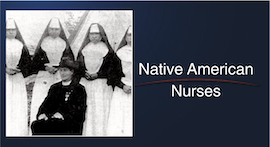
As early as the Spanish-American War, Native Americans contributed to the defense of their country, and nursing was no exception. During that era, the U.S. military added more than 1,500 contract nurses, including Native American nurses, to care for sick and injured servicemen. Native American nurses began their work at a military hospital in Jacksonville, Florida, but were soon transferred to Havana, Cuba. They were awarded the Cross of the Order of Spanish-American War Nurses for bravery and heroism in the hospital and on the field. Seeing the value these nurses brought to the well-being of the troops, the Surgeon General established criteria for a reserve group of nurses in preparation for the next war campaign.
1901 Army Nurse Corps
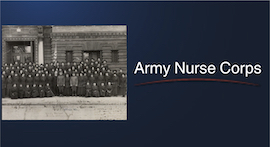
Congress officially established the Army Nurse Corps to support the growing military and the new Army Medical Department in 1901. These nurses were the first women in the Army and the U.S. Army General Hospital at the Presidio in San Francisco, California (later the Letterman Army Medical Center) was the first Army hospital to employ them. In addition to the Army Nurse Corps, a reserve force was established so there would be no shortage of nurses during war time. These nurses were appointed in the Regular Army for a three-year period, although nurses were not actually commissioned as officers until nearly five decades later.
1908 Navy Nurse Corps
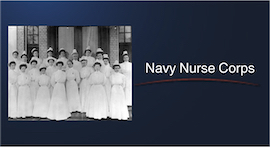
The Naval Appropriations Bill in 1908, signed by President Theodore Roosevelt, authorized the establishment of the Navy Nurse Corps. Twenty women were selected and assigned to the Naval Medical School Hospital in Washington, D.C. However, the Navy did not provide room or board, so nurses had to foot the bill for their housing and meals (nurses’ Permanent Relative Rank—and accordant benefits—would have to wait nearly four decades). These dedicated trailblazers would come to be known as “The Sacred Twenty” because they were the first women to serve formally as members of the Navy. Today, the Navy Nurse Corps is more than 4,000 active duty and Reserve nurses in more than 20 specialties.
1908 Lenah Sutcliff Higbee Receives Navy Cross
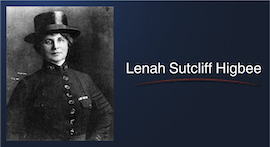
In October of 1908, Lenah Sutcliff became one the first twenty nurses in the newly formed Navy Nurse Corps (referred to as “The Sacred Twenty”). Three years later, she became the second superintendent of the Navy Nurse Corps and directed the Corps through World War I. For her distinguished service and her devotion to duty, Higbee was awarded the Navy Cross—the first living woman to receive that honor. Higbee was also the first woman to have a U.S. Navy warship named for her.
1909 Jane Delano
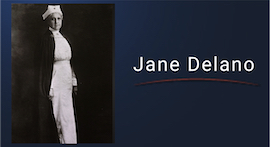
Jane Delano was the superintendent of the U.S. Army Nurse Corps from 1909 to 1912 and founder of the American Red Cross Nursing Service, which by the start of World War I had trained more than 8,000 nurses for emergency response.
Nurses Filling Billets Outside the Continental United States 1910
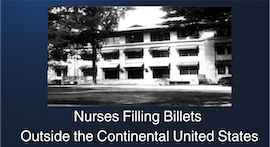
By 1910, nurses began filling billets at hospitals outside the continental United States. The first overseas station staffed with Navy nurses was Naval Hospital Cañacao, located at Cavite Navy Yard, in the Philippines.
1917 World War I
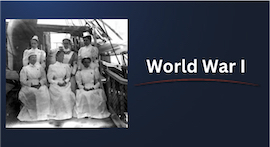
The American Red Cross signed up more than 22,000 nurses during World War I. Many worked with the British and French armies serving in American units. Originally kept far away from the battlefront, nurses were moved closer to front lines to treat the overwhelming number of casualties. And one fact became clear: having a corps of trained nurses improved soldiers’ healing times and prevented deaths from battle injuries. Still, nurses were not given rank nor were they commissioned. This lack of status prompted a campaign to accord the U.S. military nurse’s rank, which thanks to the service of trailblazing nurses during World War I, would come to fruition a few years later.
1918 The Army School of Nursing
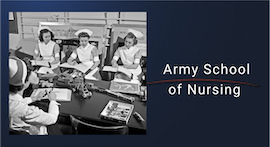
The Army School of Nursing was authorized by the Secretary of War as an alternative to utilizing nurses’ aides in Army hospitals. Courses of instruction opened at several hospital facilities. Annie W. Goodrich, appointed as Chief Inspector Nurse for the Army, became the first Dean of the Army School of Nursing. On March 23, 1923, she was awarded the Distinguished Service Medal . Although a military uniform and an insignia were authorized, the students still retained civilian status. The Army School of Nursing was discontinued in 1931 as an economy measure. Many of its graduates went on to direct nursing services in hospitals or became university faculty members.
1920 The Army Reorganization Act
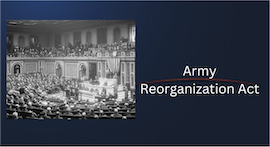
A campaign to recognize U.S. military nurses with proper rank led to The Army Reorganization Act of 1920. This Act granted “relative rank” for all Army nurses as majors, captains, and lieutenants. This meant nurses were not commissioned officers, but their relative standing in the Army corresponded to that of commissioned officers. Although the Act authorized the female nurses to wear insignia, the War Department chose not to prescribe rights and privileges equal to male officers. But, by establishing a formal hierarchy of subordinates and superiors, Army nurses could better organize, exercise authority, and render services. The battle for nurses’ full rank and equal status in the military lay in the future, but the green light for their relative rank was celebrated as one of the first victories in the history of military nursing.
World War II 1939
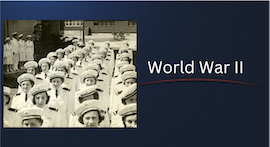
During World War II, more than 11,000 women served in the Navy Nurse Corps (including active duty and Reserve). Navy nurses served on 12 hospital ships, at 40 naval hospitals and 176 dispensaries, and on medical evacuation planes.
1942 Della Raney
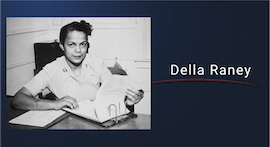
Della Raney’s first application to the Army Nurse Corps was denied, based on her race. But that didn’t break her spirit to serve. Raney wrote a letter to the Director of Nursing at the Red Cross and was accepted. Raney persisted with the Army Nurse Corps and with her new Red Cross credentials, she became the first African American admitted into the Corps. This history-making milestone opened the door for hundreds more black nurses to serve the U.S. during World War II. And Raney’s impressive legacy of service is punctuated by more firsts: she was the first African American commissioned as a second lieutenant in the Army Nurse Corps and the first African American nurse with the Army Air Corps promoted to captain. Raney retired in 1978 as a major and is buried at Arlington National Cemetery.
1942 Navy Women’s Reserve Act (WAVES)
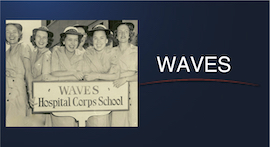
Following World War I, only a small number of female Navy nurses represented their gender in actual naval service. But World War II would change that. In the early 1940s, the Navy prepared to accept enlisted women and the first female commissioned officers who would supervise them. On July 30, 1942, the Navy Women’s Reserve Act was signed into law, establishing what was commonly known as WAVES—Women Accepted for Volunteer Emergency Service—a division of the U.S. Navy founded to free up male personnel for sea duty. Little did anyone know the resulting influx of women in the U.S. Navy would last far beyond the World War II emergency for which they had been recruited. The legacy of WAVES flourishes in the careers of the more than 8,000 women in the Hospital Corps who serve in support of continued naval superiority.
1942 Sue Sophia Dauser
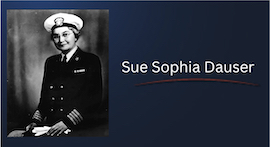
During the 1920s, Sue Dauser was a Chief Nurse serving on board several ships and overseas as well as at U.S. facilities. She tended President Warren G. Harding during his fatal illness in 1923. In the 1930s, Dauser was principal Chief Nurse at several Navy medical facilities. She was appointed Superintendent of the Navy Nurse Corps in 1939. Serving in that capacity throughout World War II, she supervised the great wartime expansion of the Nurse Corps and its activities throughout the world. On Dec. 22, 1942, Dauser was sworn in as captain, becoming the first woman in the Navy to wear a captain’s four gold stripes.
1943 Flight Nurses
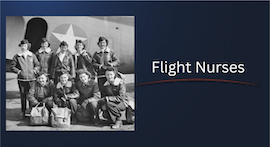
Before World War II, U.S. military strategies didn’t include aircraft for medical evacuations. But it was a global war, and U.S. Army Air Forces had to quickly develop “aeromedical evacuation,” which included flight nurses. On Feb. 18, 1943, the first class of flight nurses formally graduated at Bowman Field in Kentucky. Establishing USAAF worldwide air transportation routes facilitated flights of wounded servicemen to safety and treatment far from the front lines. Eventually, about 500 Army nurses served as members of 31 medical air evacuation transport squadrons operating worldwide.
1943 United States Cadet Nurse Corps
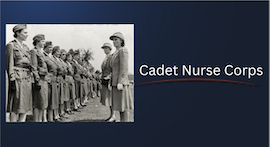
The Nurse Training Act established the United States Cadet Nurse Corps and provided for federal financial aid for nurse education. The goal was to increase the number of nursing students to free up registered nurses for enlistment in the military without disrupting civilian hospital care. The stringent academic regulations established by the Cadet Nurse Corps also improved standards in overall nursing education. Student cadet nurses were not required to enter military service upon completion, although part of their agreement was to spend six months serving in a health care facility. Many historians have concluded the Cadet Nurses Corps prevented the collapse of the civilian hospital system during World War II.
1947 Army-Navy Nurse Act
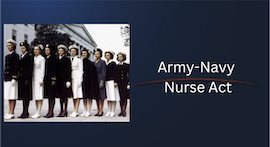
The Army-Navy Nurse Act of 1947 provided permanent commissioned officer status for members of the Army Nurse Corps from the grades of second lieutenant through lieutenant colonel. It also provided for the Chief of the Army Nurse Corps to serve in the temporary grade of colonel. After more than a century and a half of dedicated military service, Nurses in the Army and Navy had finally gained permanent commissioned officer status.
1949 Air Force Nurse Corps
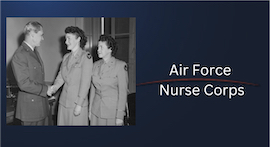
The youngest of the military’s medical services, the Air Force Nurse Corps has a proud heritage. In 1949, an independent Air Force Medical Service was established with the AFNC as an integral part. The first Chief of the AFNC was Colonel Verena Marie Zeller, and her first objective was to procure enough qualified professional nurses. During a nationwide nursing shortage, the Air Force initiated active recruitment programs, encouraging many brave Americans to answer the call to service. Since then, the Air Force Nurse Corps nurses have served in every major military conflict. In 1955, the Air Force Nurse Corps began accepting men, who today comprise approximately 30 percent of the Air Force Nurse Corps.
1955 Hazel Johnson-Brown
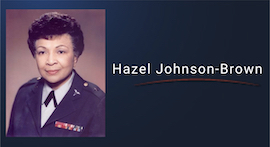
Brig. Gen. Hazel Johnson-Brown enlisted in the military in 1955, just seven years after President Harry S. Truman moved to integrate the armed forces and abolish discrimination. As she continued to advance her education, she was named director of the Walter Reed Army Institute of Nursing and was named Army Nurse of the Year two times. In 1979, she was nominated as the 16th chief of the Army Nurse Corps and promoted to brigadier general, becoming the first African American woman to earn the rank. Following her retirement, she entered academia, serving as a professor of nursing at Georgetown University and George Mason University.
1955 Commissions for Army Reserve Male Nurses
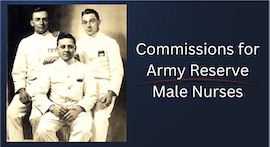
On Aug. 9, 1955, Congress passed a law authorizing commissions for male nurses in the U.S. Army Reserve for assignment to the Army Nurse Corps Branch. The Army-Navy Nurses Act of 1947 was amended to strike “women” for “Army” in the description of its chapter of law. Congress would bolster that progression 11 years later by authorizing commissions in the Regular Army for male nurses. Ever since, the Army Nurse Corps has been greatly enhanced by the inclusion of male nurses in completing the mission of the corps.
1956 Public Law 845
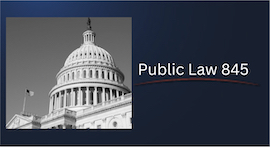
Public Law 845 permitted appointment of women in the National Guard and in the Air National Guard. Nurses could now be commissioned in the Air National Guard without having had prior military service.
1956 First Nurse Commissioned in the Air National Guard
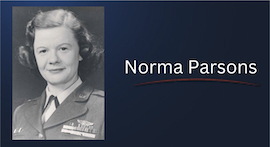
The Air National Guard commissioned its first nurse, Capt. Norma Parsons, into the New York Air National Guard’s 106th Tactical Air Command Hospital, Floyd Bennett Field, Brooklyn, New York.
1958 Nuclear Nursing Course
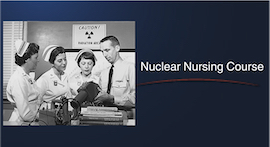
In 1958, 12 nurses became the first in the country to take a course in nuclear nursing. The course, which started Sept. 3, 1958, at the Naval Medical School at the National Naval Medical Center campus in Bethesda, Maryland, included instruction on the principles of radioisotope therapy and care of mass casualties from an atomic disaster.
1964 Male Nurses in the Navy
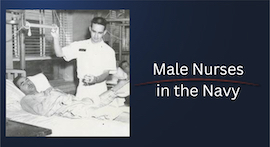
Secretary of the Navy Paul H. Nitze revised Nurse Corps requirements to allow men to join the previously all-female Corps. This new policy also allowed qualified enlisted men of the Hospital Corps to apply for the Navy Enlisted Nursing Education Program.
1966 Aerospace Nurses
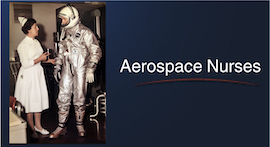
The first two nurses graduated from an aerospace nurse course at Patrick Air Force Base, Florida. The course developer, Maj. Pearl E. Tucker, later received recognition as the first aerospace nurse.
1972 Rear Admiral Alene B. Duerk

The director of the Navy Nurse Corps and World War II veteran, Rear Admiral Alene B. Duerk, became the first woman in the Navy’s history to be promoted to flag rank.
1982 Blanchfield Army Community Hospital
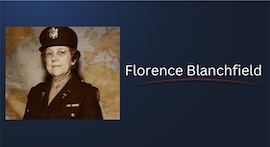
The new hospital at Fort Campbell, Kentucky, was dedicated and named the Col. Florence A. Blanchfield Army Community Hospital. This was the first permanent U.S. Army hospital named for a female and for a nurse.
1998 Nancy R. Adams
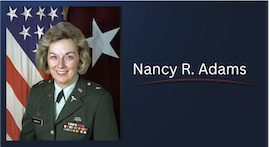
Armed with a bachelor’s degree in nursing, Nancy R. Adams entered active duty in 1968 as a medical surgical nurse at Brooke Army Medical Center [or was it called a hospital in 1998?] in San Antonio, Texas. After completing a medical intensive care unit assignment in Korea, she earned a master’s degree in medical-surgical nursing. Over the next 20 years, Adams assumed leadership positions in the U.S. and abroad. In 1998, she became the first Army nurse to be nominated for promotion to major general, the first Army nurse to earn a second star. After 35 years of Army service, Major General Adams retired from active duty in 2002, and shifted her attention to new challenges: she began employment in the federal government’s Senior Executive Service working for TRICARE, the Department of Defense health care program.
2000 Operation Enduring Freedom and Operation Iraqi Freedom
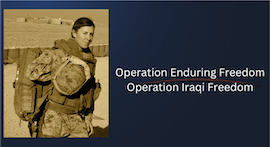
Beginning in the early 2000s, Navy nurses deployed to Afghanistan and Iraq for Operation Enduring Freedom and Operation Iraqi Freedom. From 2010–2020, more than 3,000 Navy nurses deployed in support of every combatant command’s area of operations worldwide. Since April 2020, Navy nurses have been deploying to hospitals across the country to support civilian health care personnel in the treatment of COVID-19 patients.
2011 Lt. Gen. Patricia D. Horoho
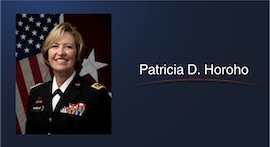
Patricia Horoho’s career in military medicine was extraordinary: 33 years with the U.S. Army; retiring as Lieutenant General; the 43rd Army Surgeon General; Commander of the U.S. Army Medical Command. As Surgeon General, she fully revamped warrior care, allowing Army Medicine to offer better care options for soldiers. Horoho was recognized as a Nurse Hero after administering first aid to 75 individuals following the Sept. 11, 2001 terrorist attack at the Pentagon.
2020 Navy Nurses aboard USNS Comfort’s COVID-19 Relief Mission
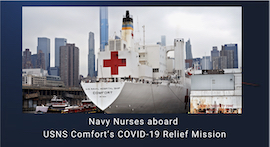
In March 2020, under the direction of U.S. Northern Command, the U.S. Navy Hospital Ship, the USNS Comfort, was activated to support New York City’s overwhelmed hospitals crippled with COVID-19 patients. The ready-on-arrival, 1,100-member medical treatment facility that embarked aboard Comfort included critical care nurses, perioperative nurses, transport nurses, and Navy Reserve nurses.
2020 Navy Nurses Support Skilled Nursing Facilities
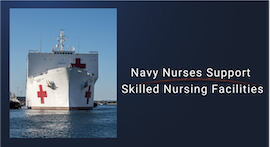
Along with USNS Comfort, the USNS Mercy provides an afloat, mobile, acute surgical medical facility to U.S. military and hospital services to support U.S. disaster relief and humanitarian operations worldwide. In March 2020, a few weeks after Comfort was deployed to New York City to help treat the area’s surging COVID-19 patients, the USNS Mercy was sent to the coast of Los Angeles. But unlike Comfort, Mercy’s mission was not to treat COVID-19, but to serve as a referral hospital for non-COVID-19 patients to ease pressure on hospitals there dealing with coronavirus cases.
You also may be interested in…
Making Waves: Remembering the First Women of the Hospital Corps
Article Around MHS
3/28/2023
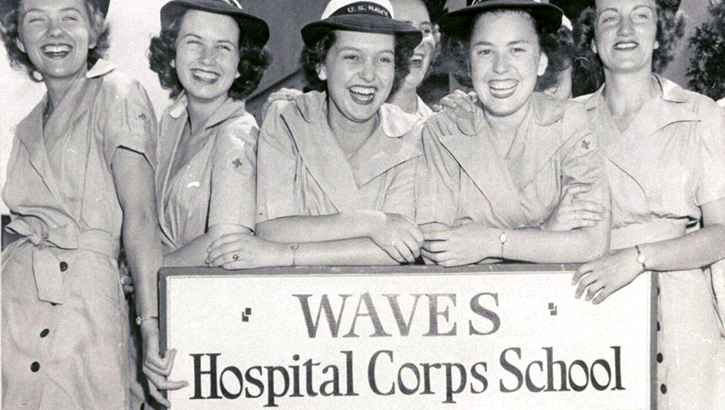
Meet some of the pioneers of women in military medicine and how they changed the course of American medical history.
Navy-Marine Corps Relief Society Visiting Nurse Program Celebrates 100 Years
Article Around MHS
12/2/2022
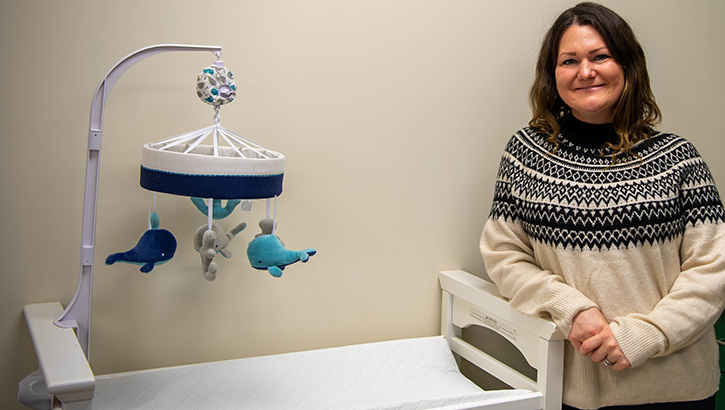
The Visiting Nurse Program of Navy-Marine Corps Relief Society (NMCRS) organization provides specialized care to the communities they serve around the world. Founded on November 25, 1922 when Nell Watson was hired as the first visiting nurse at the Parris Island Branch Auxiliary, the program celebrated its centennial anniversary Nov. 25, 2022.
Future of Nursing: Telehealth, More Innovation and Maybe Some Robots
Article
5/13/2022
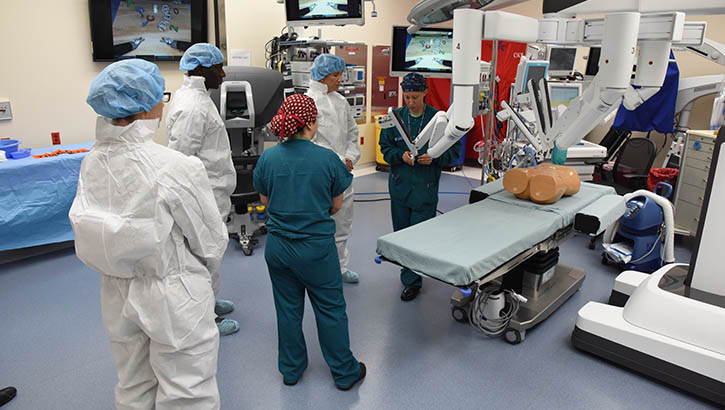
The future of nursing is here due in part to changes brought by the COVID-19 pandemic.
Army Public Health Nurse offers thank you to nurses across Army: Reminder of where we came from
Article Around MHS
5/9/2022
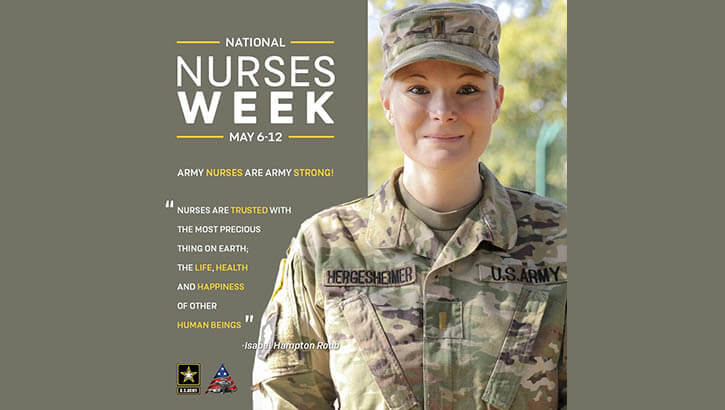
U.S. Army Public Health Center thanks all Army Public Health Nurses for the hard work and dedication you show to the communities you serve every day.
How One Military Nurse Persevered Through the COVID-19 Response
Article
5/5/2022
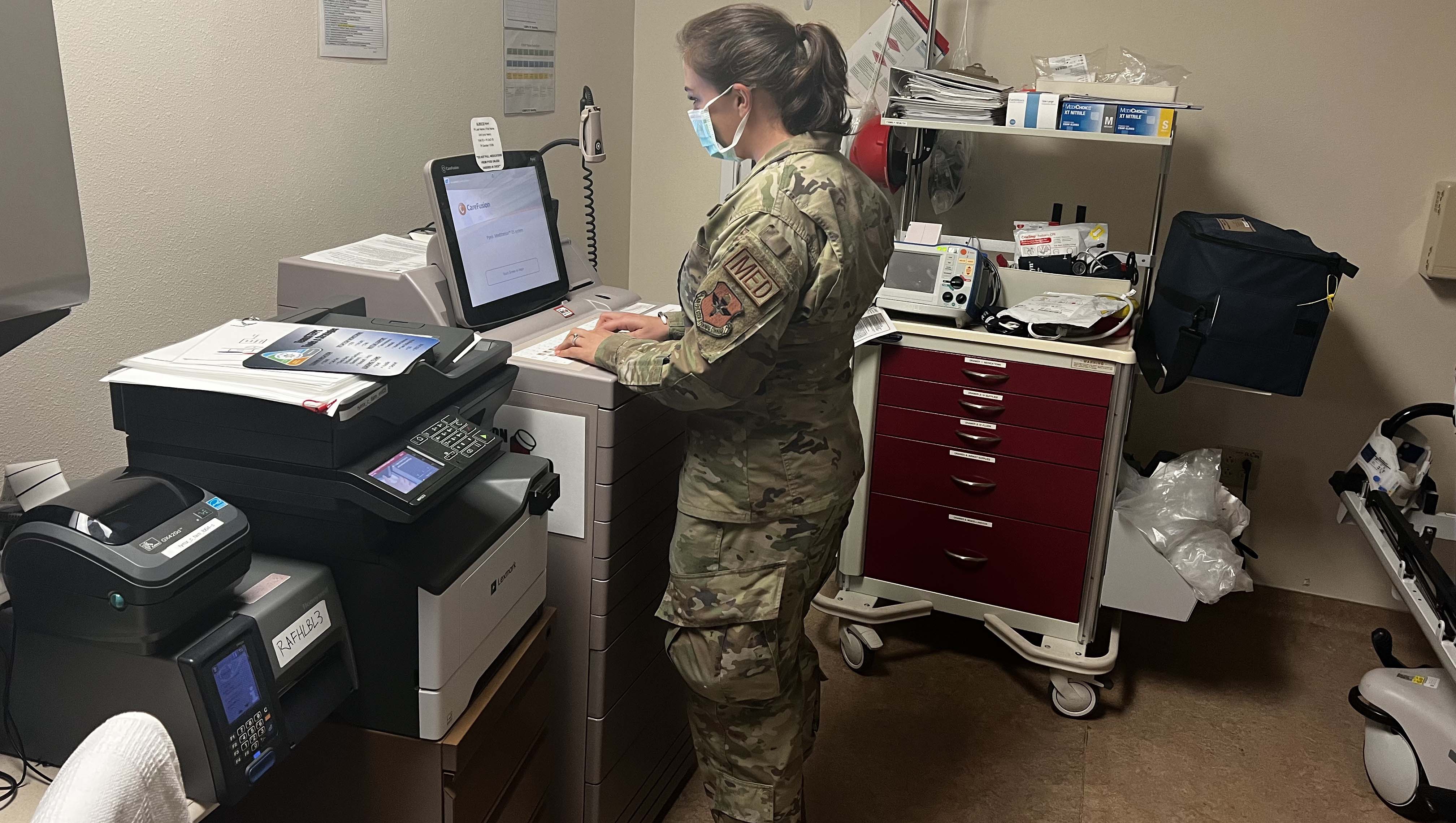
Nurses across the Military Health System have played a vital role in providing routine patient care and meeting the needs of the COVID-19 pandemic.
‘I Love the Intensity’ – One Nurse Recalls Three COVID-19 Deployments
Article
5/5/2022
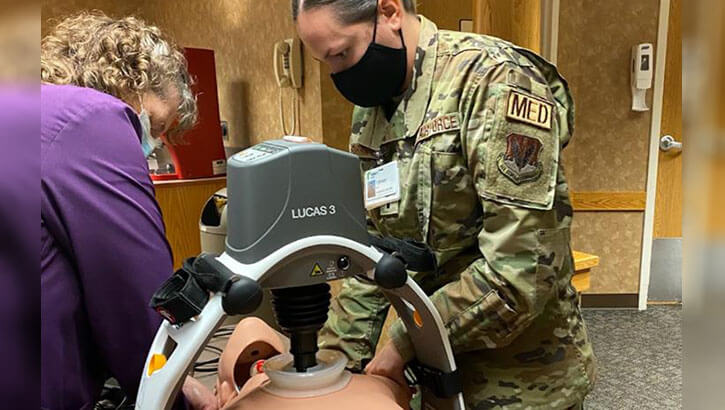
Nurses are unique, they follow a calling to care for others. Military nurses do that as well as serve their nation. For Nurses Week, the MHS highlights some of their own.
Navy certified nurse midwife epitomizes life of service
Article
5/12/2021
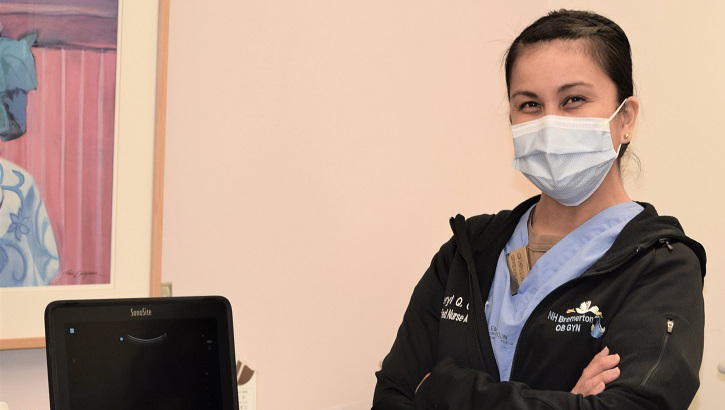
Navy nurse contributes to Navy mission while representing Asian Pacific Americans as the only certified nurse midwifes
Laughter really is among the best medicines, says Air Force nurse
Article
5/12/2021
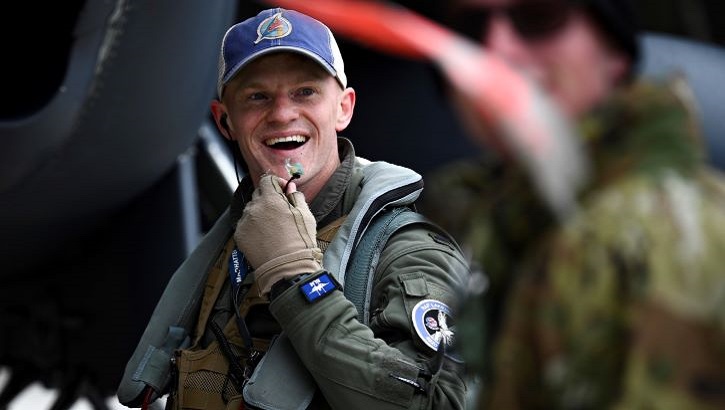
Air Force Col. Jacqueline Killian, senior nurse scientist for the 711th Human Performance Wing, located at Wright-Patterson Air Force Base, Ohio, talks about her 2015 PhD research on the health benefits of laughter yoga.
Despite a low profile, Commissioned Corps nurses are proud to serve
Article
5/12/2021
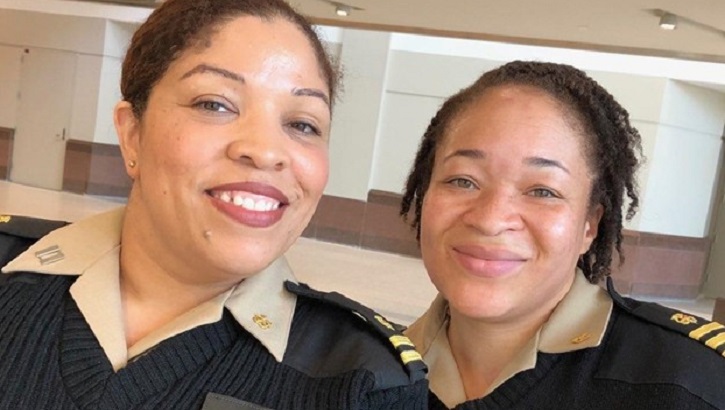
Nurses account for the majority of the Commissioned Corps of the U.S. Public Health Service, are a tight-knit group, and wear plenty of hats.
USU nursing students saved lives, receive medal
Article
5/11/2021
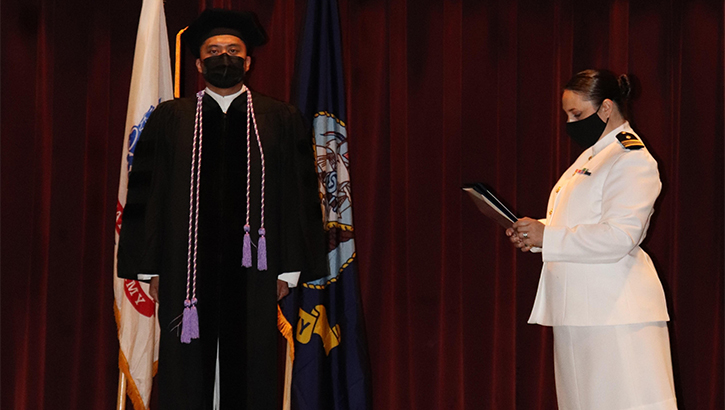
USU Nursing Students Receive Medals for Life-Saving Response
Military nursing highlighted during National Nurses’ Week
Article
5/11/2021
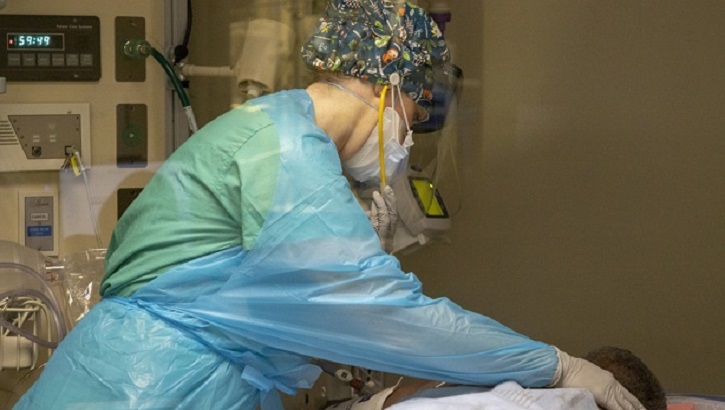
Nurse facts by the numbers for 2021 Nurses’ Week
Two Munson nurses at forefront of COVID-19 vaccination tracking
Article
5/11/2021
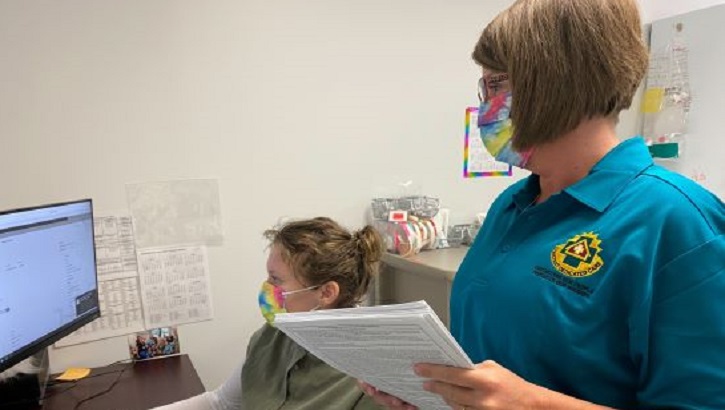
Munson nurses Ashley Woodruff and Erin Richter are on forefront of inoculation and tracking of COVID-19 vaccinations.
Eielson nurse says technology, readiness integral to military nursing
Article
5/10/2021
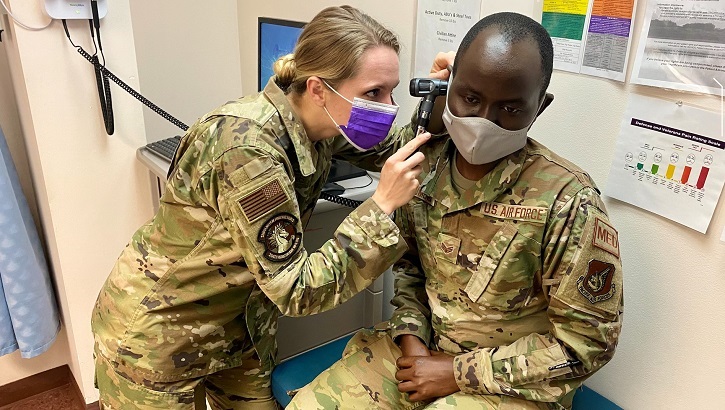
Air Force 1st Lt. Katelyn Schoneweis, a clinical nurse at Eielson Medical Clinic at Eielson Air Force Base, Alaska, said technology like MHS GENESIS, working with the Army and her commander’s increased focus on readiness have already benefitted her early in her career.
Army nurse recognized with national nursing honor
Article
5/10/2021
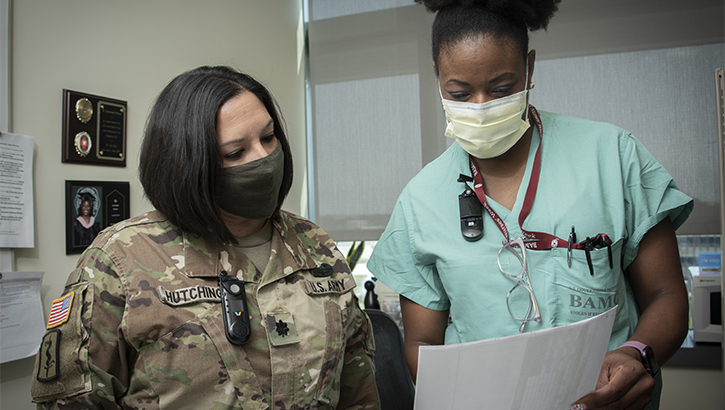
Army Lt. Col. DeAnna Hutchings was one of only 18 nurses from across the nation — and the only military nurse — to receive the 2021 Circle of Excellence award from the American Association of Critical-Care Nurses for care of acutely and critically ill patients and their families.
Diversity, flexibility of Nurse Corps members makes them stand out
Article
5/7/2021
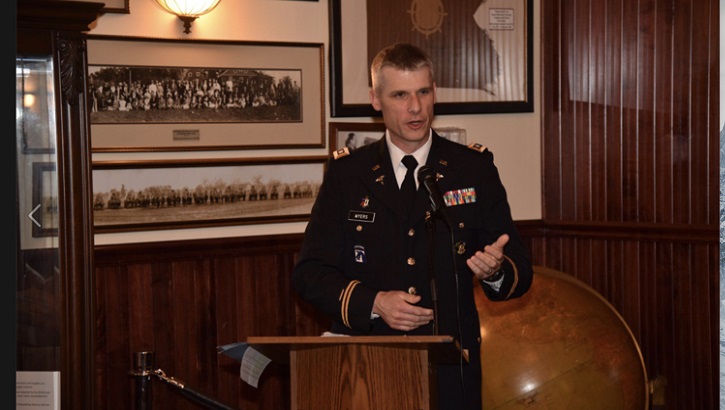
Unified. Reliable. Ready. – National Nurses Week holds special significance after unforeseen events of the past year.
You are leaving Health.mil
The appearance of hyperlinks does not constitute endorsement by the Department of Defense of non-U.S. Government sites or the information, products, or services contained therein. Although the Defense Health Agency may or may not use these sites as additional distribution channels for Department of Defense information, it does not exercise editorial control over all of the information that you may find at these locations. Such links are provided consistent with the stated purpose of this website.
You are leaving Health.mil
View the external links disclaimer.
Last Updated: May 02, 2023
[ad_2]
Source link
